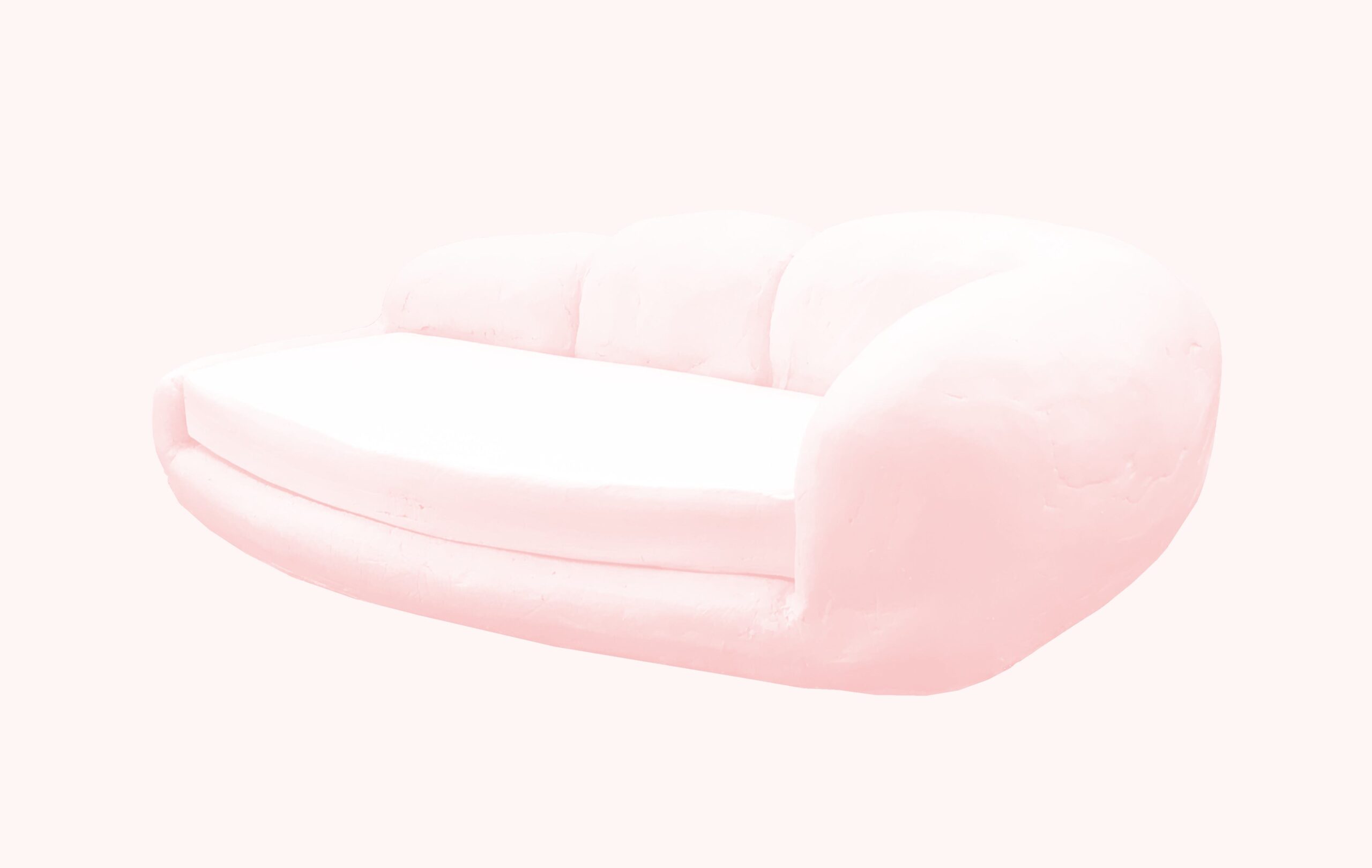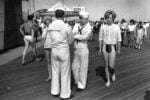Pinksummer goes to Rome – Bojan Šarčević

Un corpo che transita nello spazio è un gesto che trasforma lo spazio in luogo, un luogo ha sempre un carico di significati simbolici che implica la progettazione del vivere.
Comunicato stampa
Un corpo che transita nello spazio è un gesto che trasforma lo spazio in luogo, un luogo ha sempre un carico di significati simbolici che implica la progettazione del vivere. Un luogo è in questo senso uno spazio percepito dal corpo attraverso il suo apparato sensoriale, occhi, orecchie, naso, epidermide… L’idea di luogo include in qualche modo il concetto di “limen”, varco, soglia, orifizio. Seppure il mondo orientato dalla tattilità sia connesso a quello orientato dalla vista attraverso l’astrazione del ricordo delle esperienze passate, sembra che il mondo della tattilità sia più confortevole, mantenendo il corpo in stretta aderenza con il luogo che abita, in cui si comporta, che sia un intérieur delimitato dal soffitto, o uno spazio atmosferico con sopra il cielo. In “La dimensione nascosta” Edward Hall cita l’antropologo Benjamin Lee Whorf che in “The Language, Thoughts and Reality” afferma che nella lingua hopi, quella degli indiani che vivono nelle pianure desertiche a nord dell’Arizona, la parola tempo non esiste, perché il tempo è collegato in modo inestricabile al concetto di spazio e per gli Hopi lo spazio è qualcosa di profondamente reale. Gli Hopi non sanno immaginare, né tantomeno descrivere nella loro lingua luoghi come il paradiso o l’inferno. Seppure questo popolo costruisca robuste case di pietra, il loro linguaggio non ha parole per nominare, come fossero cose, spazi tridimensionali tipo il corridoio o l’entrata di una casa, che sono espressi in hopi come localizzazioni.
Bojan Šarčević da sempre afferma che la magia di un’opera d’arte transiti sulla zona liminare della sua indescrivibilità. Ogni sua opera sembra rimandare a esperienze corporee e relazionali accarezzate da un approccio formale sensuale e raffinato, centripeto e purissimo rapito dalla texture e dall’immaginario tattile e visivo che l’idea di texture libera. Il suo lavoro tende a creare talvolta una sorta di frustrazione sensoriale che può essere provocata in senso a-narrativo dall’allusione scultorea a un dispositivo di arredo, come dall’accostamento di materiali freddi e sconfortevoli a altri soffici e sensuali. Negli ambienti progettati per le mostre “In the Rear View Mirror”, “Invagination” fino all’attuale “Slampadato”, Šarčević riconosce esclusivamente l’orizzonte percettivo cinestesico, annunciato fin dall’onomatopeismo linguistico di matrice fisica dei titoli delle ultime due mostre, e radicalizzato in questa mostra a pinksummer goes to rome, dalla volontà di sopprimere qualsivoglia intermediazione che sia un’immagine sull’invito o peggio il comunicato stampa. Come se un mondo espressivo estraneo e prefabbricato potesse impedire la percezione profonda dell’opera e la magia sensuale e intima della sua dimensione nascosta.
Questa lunga premessa, per dire che il comunicato stampa, per quel che vale, esiste solo perché pinksummer è un po’ come gli aborigeni australiani descritti da Bruce Chatwin in “Le Vie dei Canti”, che immaginano che le cose vengano tratte all’esistenza dal canto, noi non sapendo cantare scriviamo.
Si potrebbe affermare ancora che “Slampadato” di Bojan Šarčević rimanda, forse per coincidenza, a un’esposizione surrealista curata da Marcel Duchamp alla galleria Lelong di Parigi nel 1947, in cui installò a soffitto un sistema idrico che faceva cadere l’acqua sul pavimento di legno bagnando le sculture di Maria Martens, che era al tempo la sua amante. E infine che a noi “Slampadato” ci ha fatto pensare a “Le bain Turc” dipinto da Jean-Auguste-Dominique Ingres quando aveva 83 anni, o meglio alla descrizione del bagno turco che ispirò l’artista, fatta da Lady Mary Wortley Montagu , ambasciatore inglese della Turchia Ottocentesca: “Credo che in tutto fossero 200 donne… I primi sofà erano coperti con cuscini e ricchi tappeti, sui quali sedevano le donne… Tutte come natura le ha fatte, vale a dire, detto chiaramente, completamente nude, senza bellezze o difetti nascosti, eppure non c’era il minimo sorriso scostumato o gesto immodesto tra di loro…”
Via del Vantaggio 17/A 00186 Roma
Orario al pubblico dal martedì al sabato, dalle 15.00 alle 19.30.
La mostra chiuderà il 12 Maggio 2017
Pinksummer Palazzo Ducale-Cortile Maggiore Piazza Matteotti 28r 16123 Genova Italy
t/f +39 010 2543762 [email protected]; www.pinksummer.com
scarica il comunicato stampa qui
scarica il cv qui
BOJAN ŠARČEVIĆ
Slampadato
Opening April 3th 2017, h 6.30 p.m.
Press release
A body that moves within a space is an action that turns the space into a place, a place always has a load of symbolic meaning, which implies the planning of living. In that sense, a place is a space perceived by a body through its sensory apparatus, eyes, ears, nose, epidermis... The idea of a place somehow implies the concept of “limen”, passage, threshold, orifice. Even though tactility oriented world is linked to the sight oriented one through the abstraction of past experience memories, tactility world seems indeed more comfortable than the sight one, because it keeps the body in closer contact the place it inhabits, the place where it acts. the no matter if that is a room with ceiling or an atmospheric space topped by the sky. In his “The Hidden Dimension” Edward Hall quotes the anthropologist Benjamin Lee Whorf who, in “Language, Thoughts and Reality”, asserts that in hopi language, the one of native Hopi tribe living in desert plains of north Arizona, the word “time” does not exist, being time strictly connected with the idea of space, and to the Hopi space is something deeply real. Hopi people cannot imagine, nor describe in their language places such as paradise or hell. Although that people construct sturdy stone houses, their language has no word to name three dimensional spaces as they were things such as the corridor or the entrance of a house, that in their language are indicated as localizations.
Bojan Šarčević has always claimed that the magic of an artwork is on the edge with the impossibility of its description.
All his works seem to recall bodily and relational experiences, caressed by a sensual and sofisticated formal approach, centripetal and absolutely pure, captured by texture and by the visual and tactile imagery triggered by texture itself.
Sometimes his work tends to create some sort of sensory frustration, that can be provoked in non-narrative terms by the sculptural allusion to furniture pieces, or by juxtaposing some cold and uncomfortable material to some soft and sensual ones. In the setting designed for the exhibitions “In the Rear View Mirror”, “Invagination” and the current “Slampadato”, Šarčević recognizes only the kinesthetic perceptive horizon. Announced in the actual linguistic onomatopoeicism of his last two exhibitions and established in the show at pinksummer goes to Rome through the intention of suppressing any intermediation, no matter if the image on the invitation card or, even worst, the press release, he does so as if a precast verbal world could prevent a deep perception of the work and the sensual and intimate magic of its hidden dimension.
We wrote such a long preamble just to tell that our press release, for what it's worth, exists only because pinksummer is a bit like the aboriginal Australian described by Bruce Chatwin in "The Songlines", who imagine that things are drawn into existence by singing, while us, being unable to sing, we write.
We could also tell that Bojan Šarčević "Slampadato" refers, perhaps by coincidence, to a surrealist exhibition curated by Marcel Duchamp at Lelong gallery in Paris in 1947, in which he installed a watering system on the ceiling sprinkling water onto the wooden floor, letting the sculptures by Maria Martens, who was Duchamp’s lover at that time, get wet.
Finally, “Slampadato” made us think at “Le bain Turc” painted by Jean-Auguste-Dominique Ingres when he was 83 years old, namely at what inspired the artist, the description of the Turkish bath written by Lady Mary Wortley Montagu, English ambassador in 19th century Turkey: “I believe in the whole there were 200 Women (...) The first sofas were cover'd with cushions and rich carpets, on which sat the Ladys (...) all being in the state of nature, that is, in plain English, stark naked, without any Beauty or deffect conceal'd, yet there was not the least wanton smile or immodest Gesture amongst 'em (…)“



